#Welsh Riviera
Explore tagged Tumblr posts
Text
The Welsh Riviera,Ruth Jayne Lewis local artist,Quiche Lorriane,Flapjacks,French Onion & Leek Soup,Welsh Rarebit,To Catch A Thief.
Luke 6:38 38 Practice giving, and people will give to you. They will pour into your laps a fine measure, pressed down, shaken together, and overflowing. For with the measure that you are measuring out, they will measure out to you in return.” The Welsh Riviera The Welsh Riviera is a region in Wales that includes the south coast of the Llŷn Peninsula and the town of Tenby in…

View On WordPress
#Beaches in Wales#Bible#encouragement#europe#Flapjacks#French Onion Soup#Gower#history#Hobnobandslippers#Llyn Penninsula#north-wales#Onion and Leek soup recipe#Quiche Lorraine#Ruth Lewis art#scriptures#Tenby#travel#Visit Wales#Wales#Welsh Rarebit#Welsh Riviera#Wendies blog
0 notes
Text
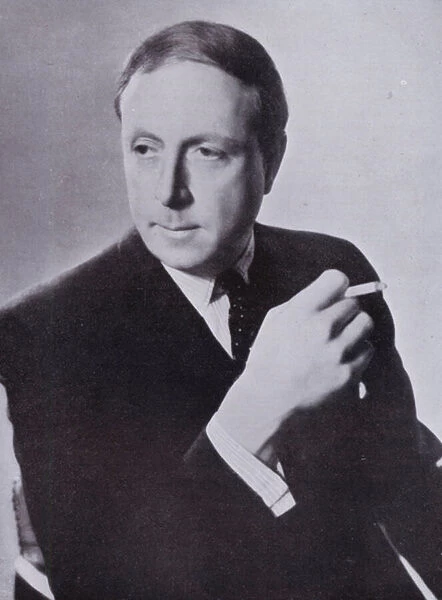
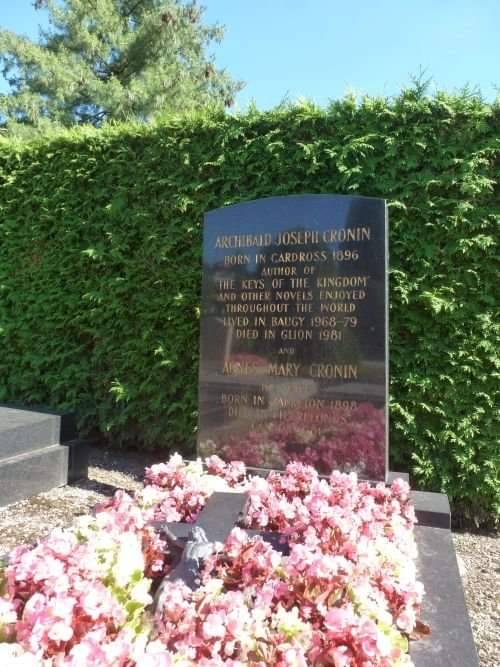

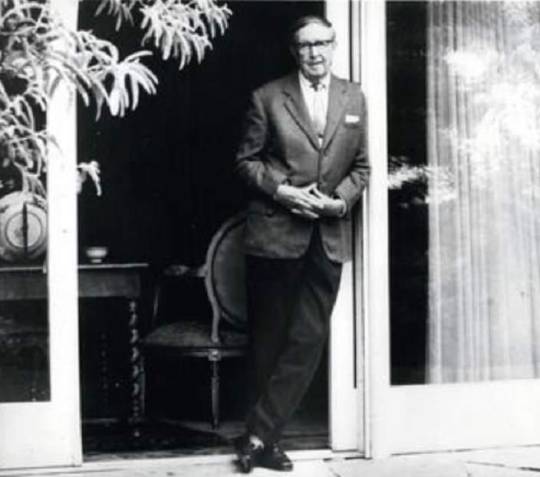
On January 6th 1981, the Scottish author AJ Cronin died in Switzerland.
AJ Cronin was born in Cardross, Dumbartonshire in 1896. He was a fine athlete as well as an outstanding student; qualifying in medicine at Glasgow with top honours. He worked at the Rotunda, Dublin, and on the Clyde before moving to Tredegar in Wales. He was a Medical Inspector of Mines, and was involved in the mining disaster at Ystfad colliery in which 38 miners drowned, and drew on these experiences in his writing. He moved on to Harley Street in London and finally established a very successful practice at 152 Westbourne Grove in Notting Hill, west London, where he practised until 1930.
Cronin’s writing career began when he was given six month’s bed rest for a digestive complaint. While convalescing from an attack of gastric ulcers on a lonely farm in the Highlands, he wrote Hatter’s Castle in 1931, about a Scottish hatmaker obsessed with the idea of his noble birth. It became a best seller. In the United States, a reviewer for The New York Times found it a work of a novelist “destined for the seats of the mighty.”
Thereafter, Dr. Cronin devoted himself full-time to writing. In 1935, he wrote The Stars Look Down, the story of a North England mining community that quickly captured attention. While The Times of London said the author had “a bent for melodrama,” The New York Times found him “uncannily like Dickens.” In 1941, the book was made into a highly praised film directed by Carol Reed for M-G-M. Story of Missionary in China.
The Citadel again drew on Mr. Cronin’s own experiences. It was the story of a young Scottish doctor in a Welsh mining village who sets up a fashionable practice in London and realizes the values of the life he had abandoned.
When The Keys of the Kingdom was published in 1941, it passed the half-million mark in sales and was a Book-of-the-Month Club selection. The hero of the novel was a self-sacrificing Catholic priest sent by his superiors into long service as a missionary in China.
By 1958, the total sales of his books in the United States alone had passed the seven million.
Arguably Cronins most well known work is ‘Dr. Finlay’s Casebook, about a pair of Scottish doctors sharing a practice. It became one of the longest-running British television series.
A J Cronin died at the age of 84 in a clinic in the village of Glion, near Montreux, Switzerland, where he had lived for the last 25 years of his life.
The pics include a curios advert for Ballenitins’s an American brewery, the campaign created a series of ads with at least thirteen different writers. They asked each one “How would you put a glass of Ballantine Ale into words?” Each author wrote a page that included reference to their beer
His 1952 piece for Ballantine was done as a reminiscence of his first taste of Ballantine in America, just after a well-played round of golf:
My first meeting with Ballantine Ale is still vivid in my memory.
It was a sweltering summer day at York Harbor, Maine, shortly after I first came to these United States. I thought it would be a memorable day because I shot the lowest golf score I ever made — a 72.
But in the locker room after the game, a friend said: “Try a Ballantine.”
I did — straight from the icebox. And as it flowed over by parched throat — tangy and refreshing in every swallow — I realized with a big thrill that my search for my favourite beverage was ended. I had always like ale, but here was something lighter, something better than anything I’d ever had abroad.
Well, my discovery outweighed by golf course. I remember that day as the time the “three rings” first rang the bell for me.
The last pic is of his grave at Cimetière de La Tour-de-Peilz La Tour-de-Peilz, District de la Riviera-Pays-d’Enhaut, Vaud, Switzerland
5 notes
·
View notes
Photo

MUSIC VIDEO: ORANGE TREES
Marina unveiled the music video for “Orange Trees” on March 22, 2019 and it positively radiates with summer sunshine. Shot in Puerto Vallarta, Mexico, the feel-good clip was directed by Sophie Muller and features Marina dancing on the beach with friends and exploring stunning vistas while serving an array of citrus-hued looks that match the song’s title.
Styling by Mercedes Natalia and Fernanda Clark. Hair by Derek Yuen and glam by Katelin Gan.

The first look shows the Welsh beauty in a look from Galvan’s Spring/Summer 2019 collection. This is the Oasis apple-green sequin-embellished midi dress which features a mock neck, open back and bell sleeves.
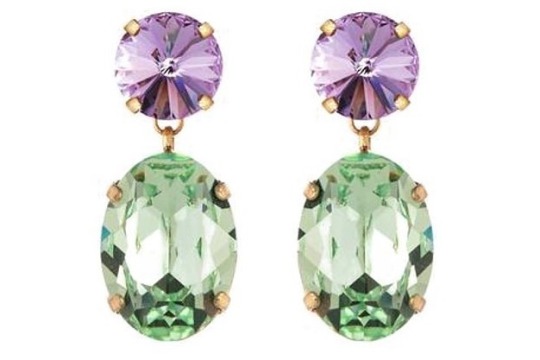
New York-based designer Roxanne Assoulin created Marina’s baby Hip Hop But Not crystal earrings in mood-lifting purple and green ($75.00 - sold out). You might remember her rocking a different colorway of these for her desert concert last year!
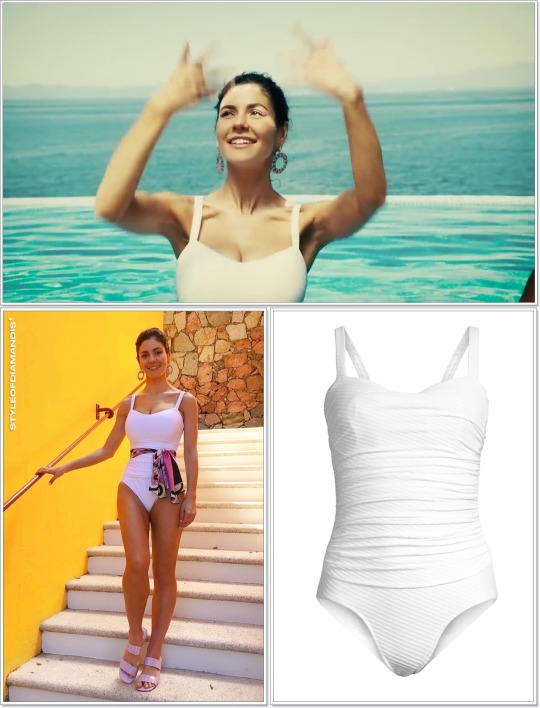
We’re joining Marina by the pool where she sports this Gottex Ribbons white textured one-piece swimsuit! It boasts a ruched full-coverage silhouette and diagonal stripes.

Another New York-based jeweller is Daniella Kronfle who seeked inspiration in ancestral mosaic artworks for her Mosaico Di Luce II purple amethyst circle earrings ($11,500.00).
Shop:
Daniella Kronfle “Mosaico Di Luce II” Earrings ($11,500.00)
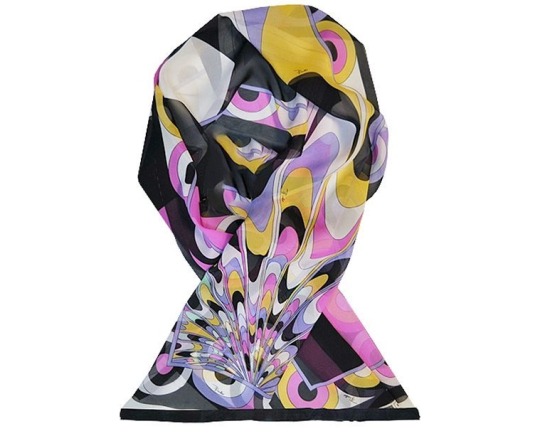
The perfect swimming ensemble was finished with a vintage Emilio Pucci abstract printed silk scarf, which M tied around her waist,...
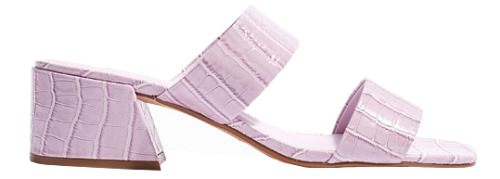
...and these Topshop Downtown croc two-strap heeled mules ($48.00) in pastel lilac. Unfortunately, they are no longer available.

A perfect summer staple is a bright day dress. Marina chose the Lacoste sporty yet chic soft petit cotton piqué polo dress in yellow. The dress can be self-tied and even has the signature embroidered crocodile logo!
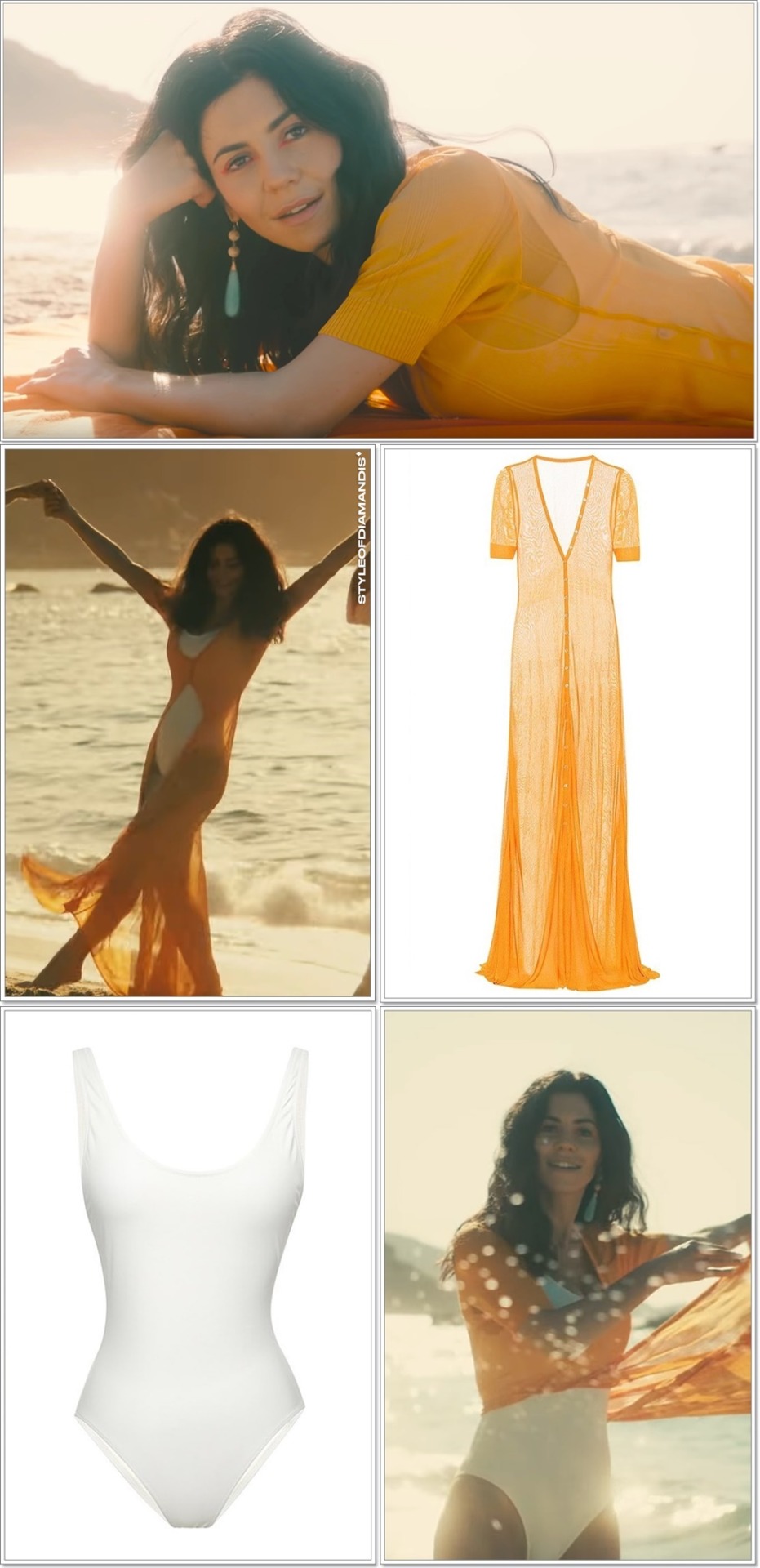
Marina's beach look included the La Robe Dolcedo orange sheer longline cardigan dress from the Jacquemus Spring/Summer 2019 collection titled "La Riviera"!
Underneath, a basic tank scoop neck maillot in white by Solid & Striped.
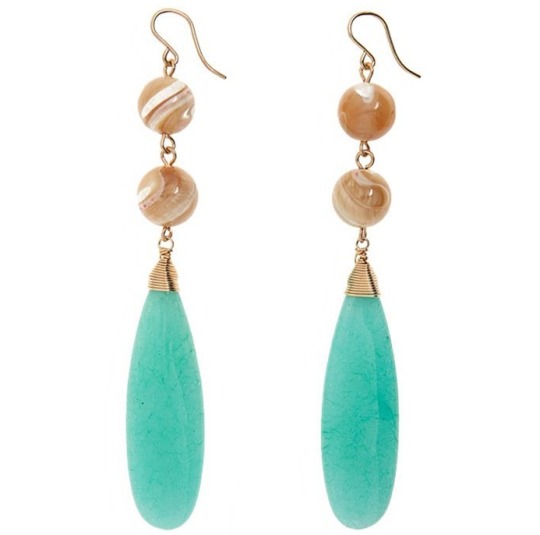
Our girl has some of the best earrings out there. And these BECK Jewels jade shoulder dusters are definitely no exception ($220.00 - sold out).

The last look of the "Orange Trees" music video shows Marina exploring Puerto Vallarta in the STAUD Vertigo black & white bow detailed bustier mini dress.
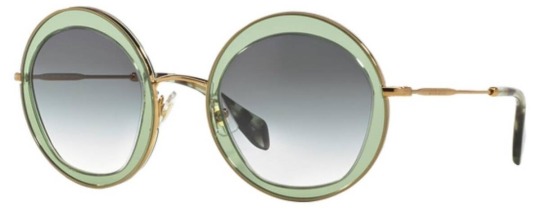
Blink and you’ll miss them! We can spot the Miu Miu 50QS green oversized round gradient lens sunglasses on Marina.
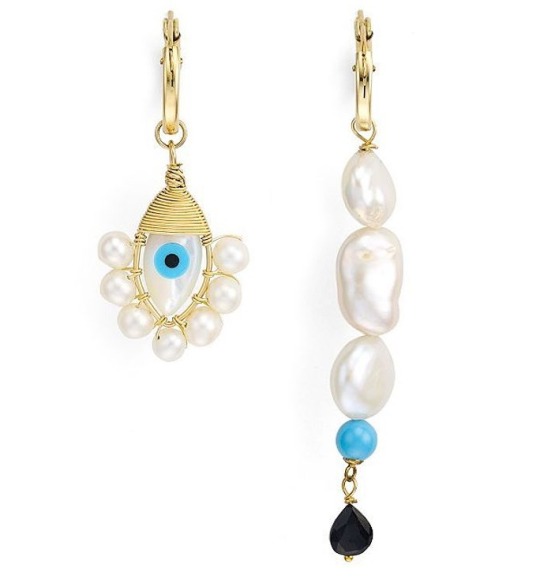
Another stunning pair of earrings provided by BECK Jewels are these Evil Eye Totem mismatched freshwater pearl earrings made with 14k gold-filled wires.
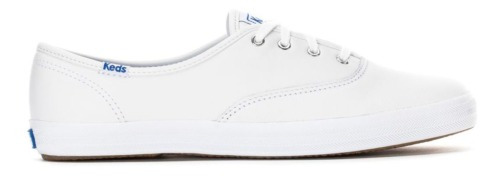
Finally, her sneakers. These are the timeless and original Champion lace-up sneakers made from white canvas by cult brand Keds.
#March 2019#Galvan#Roxanne Assoulin#Gottex#Daniella Kronfle#Emilio Pucci#Topshop#Lacoste#Jacquemus#Solid and Striped#BECK Jewels#STAUD#Miu Miu#Keds
5 notes
·
View notes
Link
We felt the vibe as Nice hosts Rugby World Cup action A party on the French Riviera, you’d be... #funny #memes #sports #live #tweets #win #twitter #tweet #bet #manchester #rugbymen #rugby union #irish rugby #super rugby
0 notes
Text
Dylan Thomas’ Last Train Ride and a Long Lost Poem
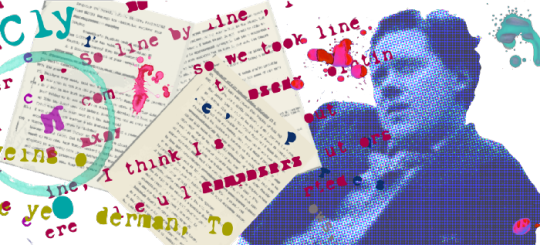
Recently, while looking for something else, I found a yellowing typescript at the bottom of an old box file. It was a transcript of an interview with Wynford Vaughan-Thomas, made over 40 years ago for an almost instantly defunct magazine that closed before its second issue. For those who don’t know of him, Vaughan-Thomas was a distinguished World War II correspondent for the BBC, who died in 1987. He became an iconic voice of the corporation, covering events like the 1953 coronation with his mellifluous Welsh lilt. Along with much else, he was one of a triumvirate of Dylan Thomas’s literary executors.
And the subject of the interview? A Dylan Thomas poem. Not a great poem, nor even a good one. But nevertheless, a poem composed at least in part by a great poet. And one that carries the traces of a Swansea which, like Thomas, is long gone but not forgotten.
Bearing witness
I had found him standing at the far end of the bar, surrounded by a group of people he’d just made laugh. Small and white-haired, Vaughan-Thomas had the aura of an elderly elf on the lam. He was clearly having fun, telling how, incredibly, as war raged all around, he’d stumbled on Botticelli’s Primavera in a deserted castello in Tuscany. There, too, were dozens of other treasures from the Uffizi, concealed under dust sheets in a dimly lit room.
Then he went straight into another story, set at the beachhead of St Raphael during Operation Anvil. As the smoke and murk from the bombardment cleared, an immaculately dressed Frenchman emerged from one of the few Riviera villas still standing. He carried a tray of champagne and exclaimed, “Bienvenue, messieurs!” before adding in English, “ … even if you are a bit late.”
If Vaughan-Thomas’s war sounds rather jolly, it wasn’t always so. He delivered a powerful commentary from Belsen shortly after its liberation, and some said he became a gentler person after bearing witness to that inexplicable brutality. As a war correspondent, he was perhaps best-known for his broadcast Air Raid Over Berlin, which aired in September 1943 and made him a household name.
And on that same 1943 night, as Vaughan-Thomas recounted: “Suddenly the telephone rings as I was trying to put the bloody thing together, and he says, ‘Hello hero!’ ‘Who’s that?’ I said. He said, ‘It’s me, I’m in the last pub in the Kings Road … bring the money.’ I used to get these calls, I mean, we all did. ‘Right, I’ll get there straight away,’ I said. ‘You stay where you are.’ So I did my broadcast Air Raid Over Berlin and all the rest of it. I then get a BBC car, which was as rare as radium in those days. And they get me down there, to the last pub on the Kings Road.”
It was a good hour before Vaughan-Thomas could be there, by which time Dylan Thomas was in full flight in his role as a roaring boy from Wales, reciting a poem about the strange goings-on one Saturday night in New Quay, the small West Wales seaside town. Thomas had begun to set the poem down clearly enough, but as the beer flowed the manuscript became increasingly illegible.
“In the final lines you have to look at it sideways,” said Vaughan-Thomas. “It’s my rarest Dylan manuscript,” he continued. “You see the poet, not exactly at work, but getting tighter and tighter and tighter, until he decides not to work anymore.” As they left, Dylan Thomas stuffed the poem into Vaughan-Thomas’s pocket. And he thought he’d lost it in, as he put it, the “reeling King’s Road”.
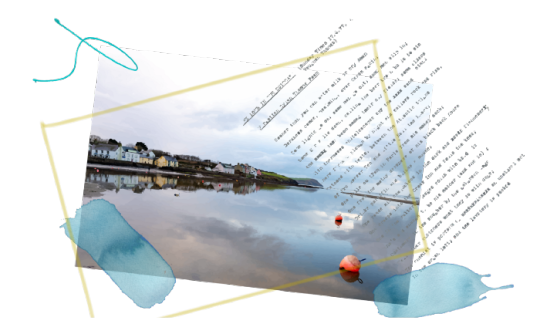
A mad legacy
Wynford Vaughan-Thomas and Dylan Thomas had been friends since they both attended Swansea Grammar. My father Clive Gammon did too. When reviewing a documentary on Vaughan-Thomas for The Spectator in the 1970s, he described it as “an eccentric and lovable school where no one was made to do anything much if he didn’t feel like it.” This benign regime was driven by the headmaster, Trevor Lloyd. Spotting Vaughan-Thomas and Dylan Thomas ‘mitching off’ to play billiards when they should have been in class, he yelled out the window, “I hope you get caught, you wicked boys!”
Peter Williams, a Swansea lawyer who ran cross-country with Dylan Thomas at the school, remembered him as “a cherubic boy with black curly hair who, to everybody’s surprise, won the school mile when he was 12,” despite being incongruously frail and avoiding any form of physical training. It was a feat newsworthy enough to feature in the Cambria Daily Leader. The newspaper clipping was still in Thomas’s wallet when he died in New York in November 1953.
Another event was in keeping with Thomas’s later, famously transgressive persona. Williams recounted how their mutual friend, a boy called Glyn, visited Dylan Thomas’s house on the same afternoon that Mrs Thomas had invited a group of ladies over for tea. Seated at the table, Dylan Thomas turned to Glyn and said, “They talk so much, they don’t hear a word anyone else says. I’ll show you.” So the small boys sat quietly at the tea table as the women chatted away. Suddenly Dylan Thomas said, “Pass the f**king cake.” Without hesitation or a break in the conversation, Mrs Thomas passed them the cake. “Told you, didn’t I!” he said.
“[It’s] the interesting thing about the whole Dylan saga,” said Wynford Vaughan-Thomas. “I mean, you can’t pin down stories to fact, but the fact that the stories are there is fascinating. The whole of the business of Dylan hangs in the air. He left a mad legacy behind.”
Not least the dark comedy of the poet’s last night in Swansea, when Vaughan-Thomas received an urgent call late one evening. En route to America, Thomas had got drunk, disgraced himself in some way with his hosts, then passed out. They’d had enough. “Get him out of the house, and he can’t stay here again.” In Vaughan-Thomas’s words, ”This was about ten-thirty at night! There I had this poet – and Dylan, when he was drunk, wasn’t easy to cart around. It was all very well people taking great romantic views about it. I thought, what in God’s name do I do? As I drove around Swansea, I thought I’d get him into a hotel. So I went to the Mackworth, which was still open then, but they said, ‘No bloody fear!’”
Vaughan-Thomas had a car, which was unusual as 1953 Britain was still suffering post-war austerity. So he drove from hotel to hotel, but the reputation of Dylan Thomas ran on before him. The bald truth is that, during the great poet’s final night in Swansea town, no one would have him.
Vaughan-Thomas continued, “And then a brilliant idea struck me, so I drove to the station. I said to the stationmaster, ‘Have you got a warm train?’ And he said, ‘Well, Mr Thomas, there’s a train that goes off and wanders all over the bloody place, but I think it ends up in Darlington.’ I said, ‘I’ve got a man who wants to go there.’ So I bought a ticket, with another on to London, and I put some money in his pocket. I carried him past the stationmaster at the barrier and I said, ‘My friend’s very ill’. And he knew Dylan, so he said, ‘As always.’ So we put him in a corner of this train which disappeared off into the dark. And I feel … well, no, I did very well by him … I don’t feel guilty at all about it. I posted him to Darlington!”
The next time Vaughan-Thomas saw Dylan Thomas, he was with the Scottish poet Ruthven Todd in McLean’s Funeral Parlour in New York City. He recalled, “Of course, he’d been done up like ‘The Loved One’. And Ruthven looked down at the body and said, ‘God! Dylan wouldn’t be seen dead in a tie like that!’”
The macabre farce continued when they lost the poet’s body soon after it had crossed the Atlantic on the RMS Media. The undertaker, Phil ‘the Death’ Evans, had been dispatched from Laugharne to collect the remains from Southampton. And then he simply disappeared, along with the corpse. Panicky cables were telegraphed from the funeral director’s head office in Chepstow to all parts of the country, in search of the hearse. Eventually Mr Evans was ‘headed off’ in Taunton, as he doggedly ploughed on, westward towards Land’s End.
Vaughan-Thomas asked him, “Evans bach, what were you doing in Taunton?” “Well, Mr Thomas,” he said. “Did you know I’ve never ferried further east from Laugharne than Blaenau in my life, and nobody told me the bloody country forked!”
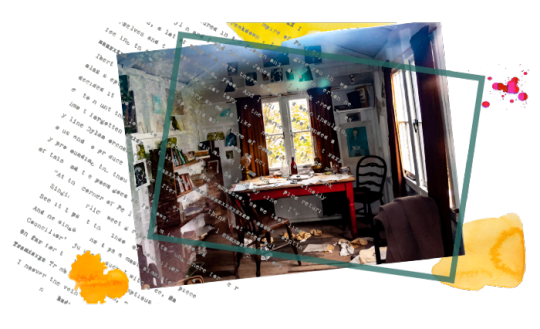
The immortal Dylan Thomas
The ghost of Dylan the younger consistently haunts Dylan the older. Thomas’s story Return Journey is strongly redolent of a lost pre-war Swansea, which is made all the more poignant because the town has just been blitzed. The narrator isn’t only searching through the rubble for the vanished town. He is also searching for his lost Swansea self, who variously,
“ … speaks rather fancy; truculent; plausible; a bit of a shower-off; plus-fours and no breakfast, you know; … worked on the Post and used to wear an overcoat sometimes with the check lining inside out so that you could play giant draughts on him. He wore a conscious woodbine, too … and a perched pork pie with a peacock feather …”
The self-portrait is well drawn, but it’s as if each characterisation is performative. It’s tempting to suppose this is because he was a keen actor as a schoolboy. But I suspect the instinct for both role play and transgression was purely a carapace, and that the roaring boy in some way cocooned the fragile Dylan the younger.
Peter Williams recalled that Dylan Thomas began to drink when he was, “I suppose about 16 or 17 … I remember to my amazement seeing Dylan one night in the billiard room of the YMCA and he was obviously plastered, and he told me that he’d been drinking whisky. But that was almost shocking — it really was, because in those days for schoolboys to drink was almost unheard of.”
“I only started to know Dylan seriously,” Vaughan-Thomas said, “When I came back from Oxford to Swansea. I was unemployed and trying to find a job, and met Dylan, the young man about Swansea, the reporter. And suddenly I said, ‘I remember you! We used to drink together in the pubs.’” That was the same pre-war period described in Return Journey, when Thomas was about 17, had just left school, and was working on the town’s paper, the Evening Post.
It was during one of those nights, perhaps a year or so later, in the Plough and Harrow in Murton, that the second lost poem was born. Dylan Thomas, Wynford Vaughan-Thomas, Daniel Jones, and possibly the painter Fred Janes, had been enjoying themselves. Talk ran free and the conversation turned to the urinal in Pell Street, which had been – according to Vaughan-Thomas – “a splendid structure of complicated iron work” close to the Albert Hall cinema and the art school. It had been swept away, as he put it, “in an act of vandalism by the town council.”
The young men decided that a vampire should return to haunt the town councillors. So line by line, with Dylan Thomas orchestrating, pointing to each in turn, the poem was produced. And here it is for the first time since it was recited to me by the late Wynford Vaughan-Thomas at the Savile club in 1981.
At the corner of Pell Street a vampire appears
Singing garlic, sweet garlic, it’s sung there for years.
See it taps at the window of councillor Rees
And he sings as he taps a most sinister piece.
Councillor’s jugulars suck I with glee
Oh for the veins of a scrumptious JP
Tremble ye alderman! Town clerk beware!
As I hoover the veins of your succulent mare.
In the Guildhall bloodorium the council convened
The motion re. Pell Street and the blood-sucking fiend.
Proposer Rev Samuel, Labour, Llandor
Went WHOOP through the window, as the vampires roar
Singing, councillor’s jugulars suck I with glee
OOOOOH for the veins of a scrumptious JP
Tremble ye Aldermen! Town Clerk beware!
As I HOOOOver the blood of your succulent mare!
No doubt the drinkers would be pleased to discover that, 72 years later, the council came to regret that earlier act of hubris. In 2011, the Evening Post carried a short report:
A DESPERATE council has installed open air urinals to stop boozy locals relieving themselves … in Swansea city centre following escalating complaints about yob drinkers. A spokesman for the city authority said, “There is nothing more unsightly than irresponsible people urinating in public” … Mike Weaver, manager of the La Prensa tapas bar in Wind St, said: “My mother taught me to keep it in until I came to a toilet.”
1 note
·
View note
Text
Cannes Film Festival kicks off with Johnny Depp, 'Jeanne du Barry' and plenty to talk about

CANNES, France
The Cannes red carpet sprang to life again Tuesday with the premiere of the Louis XV period drama “Jeanne du Barry," with Johnny Depp, as the French Riviera movie pageant launched a star-studded and potentially controversy-rife 76th edition.
Throngs of onlookers shouted “Johnny!” as Depp, in purple-hued sunglasses signed autographs and edged back into the spotlight following his explosive trial last year with ex-wife Amber Heard. “Louis XV,” directed and co-starring Maïwenn, has been billed as Depp's comeback — though his prominent presence at Cannes has been hotly debated.
A coterie of stars streamed down Cannes' famous red carpet for the opening night ceremony, including Brie Larson, Uma Thurman, Gong Li, Elle Fanning, Catherine Deneuve (who graces this year's festival poster) and a blue-haired Helen Mirren, who carried a fan labeled #worthit.
Michael Douglas, who was to receive an honorary Palme d'Or at the opening night ceremony, walked the carpet with his wife, Catherine Zeta-Jones and their daughter, Carys Zeta Douglas.
This year's festival promises a Côte d'Azur buffet of spectacle, scandal and cinema set to be served over the next 12 days. It's unspooling against the backdrop of labor unrest. Protests that have roiled France in recent months over changes to its pension system are planned to run during the festival, albeit at a distance from the festival's main hub.
Meanwhile, an ongoing strike by screenwriters in Hollywood could have unpredictable effects on the French Riviera festival.

“My wife is currently picketing with my 6-month-old, strapped to her chest,” Paul Dano, a juror, said Tuesday, referencing Zoe Kazan. “I will be there on the picket line when I get back home.”
But with a festival lined with some much-anticipated big-budget films, including James Mangold's “Indiana Jones and the Dial of the Destiny” and Martin Scorsese's “Killers of the Flower Moon,” the party is sure to go on, regardless. Stars set to hit Cannes' red carpet in the next week and a half include Natalie Portman, Leonardo DiCaprio, Cate Blanchett, Sean Penn, Alicia Vikander, the Weeknd and Scarlett Johansson.
Earlier Tuesday, the jury that will decide the festival's top prize, the Palme d'Or, was introduced. Swedish filmmaker Ruben Östlund, a two-time Palme winner who last year won for the social satire “The Triangle of Sadness," is presiding over a jury including Dano, Larson, Argentine filmmaker Damián Szifron, Afghan director Atiq Rahimi, French actor Denis Ménochet, Moroccan filmmaker Maryam Tourzani, Zambian-Welsh director Rungano Nyoni and French director Julia Ducournau, who in 2019 became the second female filmmaker to win the Palme d'Or for “Titane.”
Östlund, 49, wondered whether he might have been handed the opportunity a decade too soon. But while addressing the press, Östlund — whose “The Triangle of Sadness” was nominated for best picture at the Academy Awards — made it clear where his allegiances lie.
“If I can choose between an Oscar and a Palme d'Or, it's an easy choice," said Östlund. "I would rather have one more (Palme) than have an Oscar.”
The opening night selection has attracted some controversy. “Jeanne du Barry,” which simultaneously opened in French theaters Tuesday, was produced following the much-watched 2022 trial during which both Depp and Heard accused each other of physical and verbal abuse. A civil jury awarded Depp $10 million in damages and $2 million to Heard.
Maïwenn has made headlines recently, too. The French actor-director has been accused of spitting at prominent French journalist Edwy Plenel.
In remarks to the press Monday, Cannes director Thierry Fremaux defended the choice, praised Depp as an actor and said he paid no attention to the trial.
“To tell you the truth, in my life, I only have one rule, it’s the freedom of thinking, the freedom of speech and the freedom to act within a legal framework,” said Fremaux. “If Johnny Depp had been banned from acting in a film, or the film was banned we wouldn’t be here talking about it.”
For more coverage of this year’s Cannes Film Festival, visit: https://apnews.com/hub/cannes-film-festival
Follow AP Film Writer Jake Coyle on Twitter at: http://twitter.com/jakecoyleAP
0 notes
Text
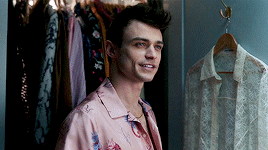

𝖑𝖆𝖞𝖊𝖗 𝖔𝖓𝖊 . initial .
full name: henry wilhelm darcy . nicknames, aliases:
henny . ( mostly by close friends or family )
darc .
age: twenty - eight . date of birth: december fifth . place of birth: london , england . residences: los angeles , california ( main residence , has a home in bel air ) , london , england ( has a flat in notting hill ) , french riviera , france ( vacation home , villa in saint tropez ) nationality: british . ethnicity: white ( irish , scottish ) . languages spoken: english , conversational french , conversational italian .
zodiac sign: sagittarius . hogwarts house: slytherin . myers - briggs: istp - a . personality: notably one of the more intimidating figures around and he enjoys it , he has a tendency to push when other’s seem flustered around him until he grows bored and then will finally crack a smile to let it be known he actually doesn’t take much seriously . he’s not big on small talk having a fondness for nitty - gritty conversation , instead . despite this he doesn’t give much of himself in conversation , enjoying the mystery that follows him too much . a notorious charmer ( loud cough ... he’s a massive player , it’s nauseating ) . he can’t seem to hold a relationship for longer than a years time , maybe it’s the commitment issues , the jealousy , his propensity for verbal warfare , likely all the above , truthfully . throughout his life he’s mastered the art of sarcasm and can come off a bit like a jerk at times . deep down he is a good guy with good intentions but at times his obsession with his reputation and career can fog his morals or ability for compassion . a firm believer in work hard play harder , if there is anything he enjoys more than work it’s going out and partying . often throwing an annual party at his villa in saint tropez , where to enter you must have both an invitation and sign a nda . did i forget to mention he’s a bit of an elitist ?
occupation: fashion designer , photographer , reality tv star . career details: creative director of burberry ( 2018 - present ) , creative director of balenciaga ( 2020 - present ) .
2013 , interned at chanel .
2013 - 2015 , joined the design team for chanel , apprenticeship under karl lagerfeld .
2015 - 2016 , joined vetements team of designers .
2016 - 2018 , photographed over twenty vogue covers , photographed calvin kleins 2017 fall campaign , photographed over ten covers for harpers bazaar .
2017 , life with henry aired for a full season on e network ( season two cancelled , upon henry pulling out ).
2017 - 2021 , recurring guest judge on project runway .
height: six foot one . weight: 170 lbs . tattoos, piercings: same as faceclaim .
father: callum darcy ( fifty - six ) , a scottish born architect . relationship : tba . mother: leah mcnally ( fifty - six , deceased ) , an irish born model and actress . relationship : tba . sibling: nora darcy ( sixteen ) an english born student and up and coming model . relationship : tba . benjamin darcy ( fourteen ) , an english born student and twitch streamer . relationship : tba . pets: willow ( pembroke welsh corgi , twelve years old ) , archie ( pembroke welsh corgi , five years old ) , molly ( scottish fold , two years old )
gender: cis male . pronouns: he / him . orientation: pansexual , panromantic ( outed by tabloids in 2015 ) . status: single . past relationships:
multiple models and actors over the years .
jordana kennedy . ( d. 2012 - 2014 )
imani williams . ( d. 2020 - 2022 )
#hillzhqsintro#ㅤ۪ㅤ۫ㅤ੭ ʰᵉⁿʳʸ 𝐝𝐚𝐫𝐜𝐲 : ❪ ⠀ ⠀ about ⠀ ⠀ ❫#ㅤ۪ㅤ۫ㅤ੭ ʰᵉⁿʳʸ 𝐝𝐚𝐫𝐜𝐲 : ❪ ⠀ ⠀ muse ⠀ ⠀ ❫#asdfghjk
7 notes
·
View notes
Text
So. The vibe is Captain Hastings on the Riviera. Matching trousers and waistcoat, with a toning shirt and either Monk shoes, button boots, or spectators. Probably the latter.
Photos taken last November (lol I know) but in good Welsh sunlight.



5 notes
·
View notes
Audio
Vintage punk from somebody’s youth, Roller Queen by Naked Raygun from Throb Throb (1984),
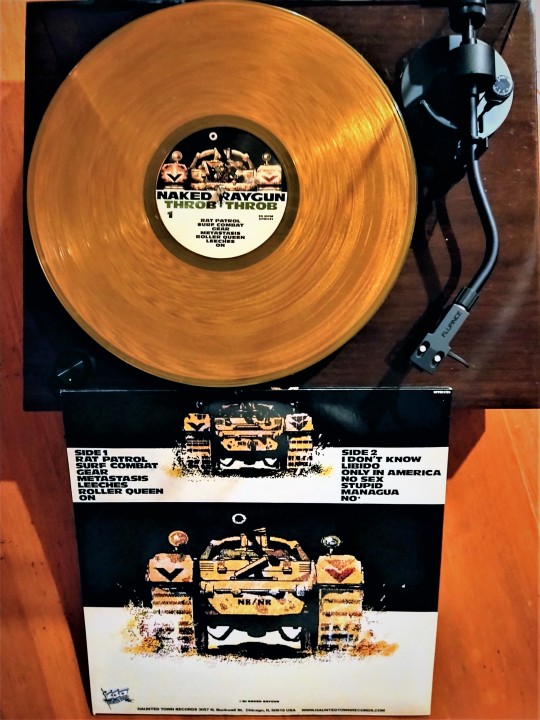
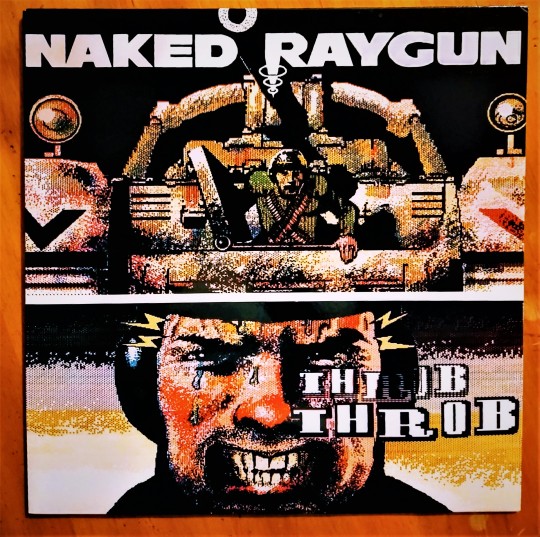
Blast furnace monomania (the end). 'Punk' is preferred to hardcore, but we hate being pigeonholed. It's as bad as being corn holed. We play aggressive, melodic, intense, chanty music... We call ourselves, hmmm, bat cave funk, zydeco bop, twist and ground flailer, closet motown..." Jeff Pezzati on Naked Raygun.
youtube
This live version of Roller Queen was recorded at the Riviera Theatre in Chicago on November 20, 1987. It was released as a bonus track on the Quarterstick Records' reissue CD of the Jettison LP (1999). Video from Kansas City Bomber starring Raquel Welsh.
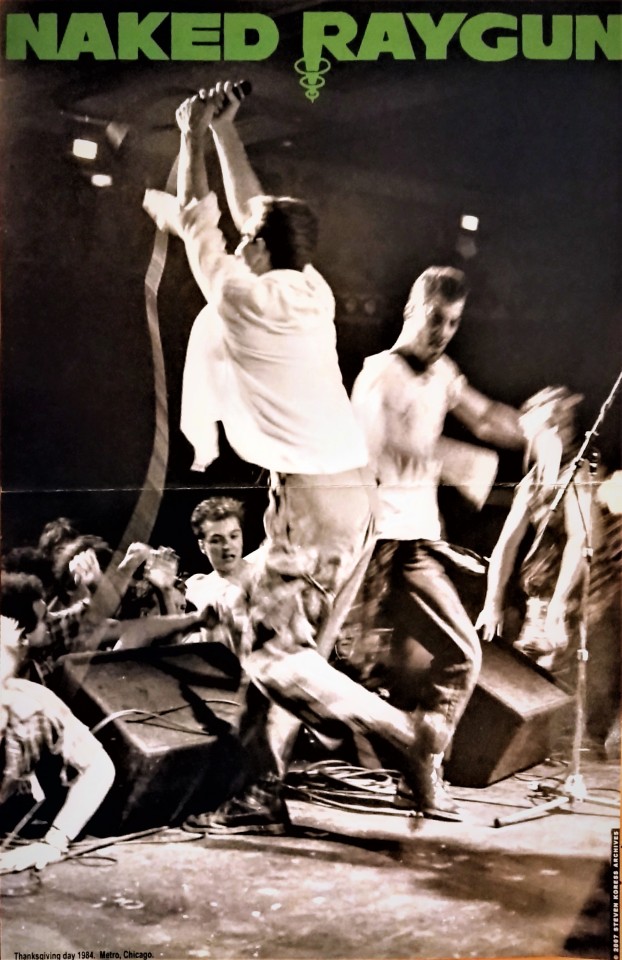
Naked Raygun - Thanksgiving Day 1984, the Metro Chicago.
#naked raygun#throb throb#roller queen#jeff pezzati#john haggerty#pierre kezdy#eric spicer#audio#audio post#punk rock#chicago punk rock#hardcore punk#chicago hardcore punk#melodic punk#jettison#live music recording#music video#my upload#vinyl records#punk records#vinyl albums#punk albums#punk vinyl#record collection#vinyl collection#vinyl rip
24 notes
·
View notes
Text
30 questions
tagged by my main comadre @mandoinevarro who writes some of the best and spiciest Mando porn and has the best memes on deck 💕😂
1. Name/Nickname: Karla despite every gringo’s attempt to call me Kayla
2. Gender: Female
3. Star sign: Libra
4. Height: 5’4
5. Time: 7:14
6. Birthday: October 9
7. Favorite bands: Damn, I’m really about to expose my old emo ass, but oh well 🤷🏻♀️. The Cure, Arcade Fire, Alkaline Trio, Rilo Kiley, Portishead, The Internet, Muse and lots more I can’t think of right now
8. Favorite solo artists: Eternally obsessed with SZA at all times period. Grew up on Selena (ya know the queen of cumbia herself and the only Selena that matters here) but currently in love with Meg Thee Stallion, H.E.R. and anything that Florence Welsh does
9. Song stuck in your head: Cosmic Love by Florence and the Machine
10. Last movie: Batman Returns seemed appropriate last night while wrapping presents last night
11. Last show: Mindhunter, a bitch loves murder shows
12. When I did create this blog: February this year but I had other blogs before that are deleted.
13. What I post: Horror and Halloween shit, Star Wars and Mandalorian shit as the description says. Oh and selfies 🤷🏻♀️
14. Last thing I googled: recipe for Seafood Stuffed shells😂😂 my fat ass is planning my Christmas dinner
15. Other blogs: this is my only active one, had a couple of other ones that i had deleted back in like 2010? (yikes)
16. Do i get asks: Rarely, but when i do its almost always disappointingly regarding a dick 😂😂😂
17. Why i chose my url: its a reference to my favorite Alkaline Trio song
18. Following: Not a lot, I’m picky
19. Followers: Enough for me lol
20. Average hours of sleep: I need 8 hours or this sleepy bitch becomes a literal monster
21. Lucky number: I really like even numbers so I guess most even numbers
22. Instruments: I think its best for all if i leave the music to musicians
23. What I’m wearing: a horror movie t-shirt and leggings, v on brand for me
24. Dream job: i would love to do make up professionally
25. Dream trip: France, but more specifically the French Riviera so i can drink and eat my weight in wine, bread and cheese. Although right now, I would kill just to visit my fam in Juárez and Querétaro
26. Favorite food: Pasta and Seafood hence the holiday meal plan googling. Also i could eat fried chicken every day of my life
27. Nationality: Mexican
28. Favorite song: Hit Different by SZA until the new album drops. Also The Suburbs by Arcade Fire. The entire Disintegration album the Cure is forever on replay
29. Last book: a collection of short stories by Stephen King called Night Shift
30. Top 3 fictional universes I wanna live in: if I was a bad ass definitely Star Wars but since I’m not Adventure Time seems pretty dope universe to live in 🤷🏻♀️😂😂
Tagging @steeeeeeeviebb, @rae-gar-targaryen @nymphonet , @horror-heks, @gadgetfl0w and anyone else who like to do it 💕
6 notes
·
View notes
Photo








A colourful variety of Terriers
#may 2016#my photos#terriers#terrier#i'm a sad sod i didn't even manage to find 10 photos of different terriers#i like their looks but i could never see me having one#riviera dog shows#dog show#bedlington terrier#kerry blue terrier#parson russell terrier#lakeland terrier#fox terrier#west highland white terrier#welsh terrier
124 notes
·
View notes
Photo


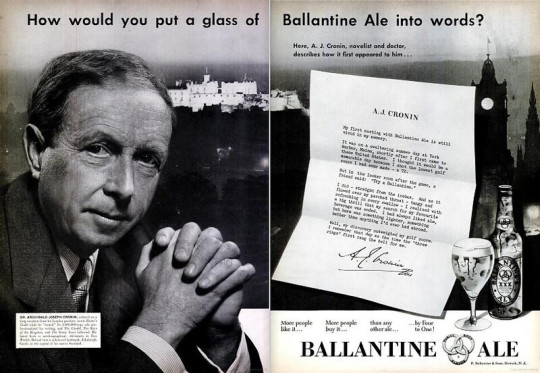

On January 6th 1981, the Scottish author AJ Cronin died in Switzerland.
AJ Cronin was born in Cardross, Dumbartonshire in 1896. He was a fine athlete as well as an outstanding student; qualifying in medicine at Glasgow with top honours. He worked at the Rotunda, Dublin, and on the Clyde before moving to Tredegar in Wales. He was a Medical Inspector of Mines, and was involved in the mining disaster at Ystfad colliery in which 38 miners drowned, and drew on these experiences in his writing. He moved on to Harley Street in London and finally established a very successful practice at 152 Westbourne Grove in Notting Hill, west London, where he practised until 1930.
Cronin’s writing career began when he was given six month’s bed rest for a digestive complaint. While convalescing from an attack of gastric ulcers on a lonely farm in the Highlands, he wrote Hatter’s Castle in 1931, about a Scottish hatmaker obsessed with the idea of his noble birth. It became a best seller. In the United States, a reviewer for The New York Times found it a work of a novelist “destined for the seats of the mighty.”
Thereafter, Dr. Cronin devoted himself full-time to writing. In 1935, he wrote The Stars Look Down, the story of a North England mining community that quickly captured attention. While The Times of London said the author had “a bent for melodrama,” The New York Times found him “uncannily like Dickens.” In 1941, the book was made into a highly praised film directed by Carol Reed for M-G-M. Story of Missionary in China.
The Citadel again drew on Mr. Cronin’s own experiences. It was the story of a young Scottish doctor in a Welsh mining village who sets up a fashionable practice in London and realizes the values of the life he had abandoned.
When The Keys of the Kingdom was published in 1941, it passed the half-million mark in sales and was a Book-of-the-Month Club selection. The hero of the novel was a self-sacrificing Catholic priest sent by his superiors into long service as a missionary in China.
By 1958, the total sales of his books in the United States alone had passed the seven million.
Arguably Cronins most well known work is ‘Dr. Finlay’s Casebook, about a pair of Scottish doctors sharing a practice. It became one of the longest-running British television series.
A J Cronin died at the age of 84 in a clinic in the village of Glion, near Montreux, Switzerland, where he had lived for the last 25 years of his life.
The pics include a curios advert for Ballenitins’s an American brewery, the campaign created a series of ads with at least thirteen different writers. They asked each one “How would you put a glass of Ballantine Ale into words?” Each author wrote a page that included reference to their beer
His 1952 piece for Ballantine was done as a reminiscence of his first taste of Ballantine in America, just after a well-played round of golf:
My first meeting with Ballantine Ale is still vivid in my memory.
It was a sweltering summer day at York Harbor, Maine, shortly after I first came to these United States. I thought it would be a memorable day because I shot the lowest golf score I ever made — a 72.
But in the locker room after the game, a friend said: “Try a Ballantine.”
I did — straight from the icebox. And as it flowed over by parched throat — tangy and refreshing in every swallow — I realized with a big thrill that my search for my favourite beverage was ended. I had always like ale, but here was something lighter, something better than anything I’d ever had abroad.
Well, my discovery outweighed by golf course. I remember that day as the time the “three rings” first rang the bell for me.
The last pic is of his grave at Cimetière de La Tour-de-Peilz La Tour-de-Peilz, District de la Riviera-Pays-d’Enhaut, Vaud, Switzerland
15 notes
·
View notes
Text
Look Into The Love Life Of Iwan Rheon And Zoe Grisedale
Iwan Rheon is a famous Welsh singer, actor, narrator, and musician. Mainly, he is known for portraying the role of Ramsay Bolton in Game of Thrones and Simon Bellamy in E4‘s Misfits. Also, Rheon played the role of Mick Mars in the 2019 movie based on Motley Crue named The Dirt. Other notorious films starred by Iwan Rheon are Vicious, Riviera, and Inhumans. Iwan Rheon girlfriend Zoe Grisedale is an award-winning producer. She is the founder of an independent production company named Grisedale Sherry Productions which focuses on championing women in film. Her company mentors women in film and shares their skills. Besides, Zoe is also a screenwriter and director. She has voiced for several audiobooks, commercials, and computer games.
Read more

0 notes
Photo

Iwan Rheon He is Welsh actor, singer and musician. He is known for his excellent portrayal of #RamsayBolton of @gameofthrones ; #MickMars of #TheDirt; He has also acted in @inhumans as #Maximus and in @rivieratvshow as #AdamClios #jazperjay #jazperjayphotography #iShootNikon #NikonMEA #IwanRheon #MEFCC #MEFCC2019 #middleeastfilmandcomiccon #comiccondubai #ComicCon2019 #ComicCon #igersDubai #dubaiblogger #davaoblogger #uaeblogger #instagrammers #mydubai #dubailife #DubaiActor #GameOfThrones #WelshActor #Celebrity #Inhumans #Riviera (at Dubai, United Arab Emirates) https://www.instagram.com/p/Bwe1n9VAb1e/?utm_source=ig_tumblr_share&igshid=1ereyjpy49be5
#ramsaybolton#mickmars#thedirt#maximus#adamclios#jazperjay#jazperjayphotography#ishootnikon#nikonmea#iwanrheon#mefcc#mefcc2019#middleeastfilmandcomiccon#comiccondubai#comiccon2019#comiccon#igersdubai#dubaiblogger#davaoblogger#uaeblogger#instagrammers#mydubai#dubailife#dubaiactor#gameofthrones#welshactor#celebrity#inhumans#riviera
0 notes
Text
Dream Alliance: Story from the Telegraph
Warning: Welsh words and a long post @sherlockvowsontheriverstyx (I’ve spent an hour crying over this bloody horse and his owners); @horsesarecreatures
A new documentary tells the incredible true story of Dream Alliance, a horse bought for £300 on an allotment in Caerphilly who went on to win £137,000 in prize money
Dream Alliance won £137,000 in prize money in his 30-race career, including victory in the 2009 Welsh Grand National Photo: Louise Osmond
It is late morning on a freezing day in Cefn Fforest, Caerphilly, a village in one of the poorest mining valleys in Wales. Brian Vokes, 67, unsteady on his legs and with far more tattoos than teeth, is making his way towards his allotment on a former slag heap. He has rented it from the council for the past 15 years, since the four coal mines surrounding the village were finally shut down and their tips flattened, bringing deprivation and the loss of livelihood to generations to come. Chickens and geese squawk noisily in their wire coops. Detritus – a bath here, bricks under flapping tarpaulin there – lies about the place. This is not the kind of allotment that produces elderberries and chard. Brian’s wife, Jan, 61, is there, still in her Asda uniform. She has been up since 4am, cleaning the tills with her daughter before the shop opens. Later, she will be going off to another cleaning job at a local school, where she will stay until 6pm.
Neither Brian nor Jan is interested in growing vegetables. Their allotment has served a completely different purpose. In 2000, As a child she had watched her father breed budgies. She had then bred pigeons and whippets herself. The first time she raced her pigeons, she won a national title. All of her whippets made it to Crufts. How hard could it be? Just because she was working class and living in the valleys and cleaned the tills at Asda, why should she settle for a hobby such as bingo or darts? Why couldn’t she breed a racehorse?
To say that Jan’s vision broke a racing stereotype is something of an understatement. Not only are racehorses usually pedigree (mainly thoroughbred), born with a reliable lineage, and schooled, trained and raced by the industry’s best, but their owners are typically privileged and rich. Breeding and owning a racehorse is an expensive hobby (£15,000 a year minimum to train), and only one per cent of racehorses ever actually win a race. While Brian bought a breeding mare – Rewbell, ‘probably the worst racehorse in Wales,’ he says, ‘so mental that by the end jockeys refused to get on her’ – from a young Welsh lad for a £300, and had her sired for a knockdown price too, many of the most promising racehorses cost hundreds of thousands to buy in the first place.
But Jan Vokes did exactly what she set out to do. Rewbell’s foal, Dream Alliance (known as Dream to his owners), bred and initially raised on the Vokeses’ slag-heap allotment, became famous in the racing world and, for a short time, the world beyond – not only for winning the Welsh Grand National in December 2009 (he won a total of £137,000 in prize money during his 30-race career), but also because of his extremely unlikely and humble beginnings combined with his extremely unlikely and humble owners.
The story of how Brian and Jan Vokes and their friend Howard Davies broke the mould of racehorse owners (with their 23-strong racing syndicate formed in the Cefn Fforest working men’s club – breed a horse to get on a course. £10 a week. see jan behind the bar, the initial sign read) is not a new one. And yet a documentary film, Dark Horse, released this month, proves its enduring appeal. The documentary has already won the Audience Award at the Sundance Film Festival.
Directed by Louise Osmond, the film shows how Dream Alliance’s success goes way beyond the relatively small world of horse racing. ‘It was moving, it was funny and it had this great narrative arc,’ Osmond says. ‘The film is not really about racing. It just happens to be in the racing world. What I saw as Jan’s defining quality was that she had no self-doubt, that she didn’t see obstacles like the expense or the snobbery of people thinking she had no right to be there. It is so refreshing. I’m sure she could be running some major corporation, but, in a funny way, she does her jobs to allow her to live this other life, this world with her animals where she feels completely herself.’
Perhaps, above all, the cinematic retelling of the story demonstrates that when human determination, self-belief and hard work are combined, anything is possible; class barriers collapse, be they for horse or human. ‘Dream and us, we were like kindred spirits,’ Jan explains. ‘No matter what people said, I never thought for one minute that Dream wouldn’t win. I researched it, I put a lot of thought into it. If I have a goal, then I am going to achieve it. Why should Dream’s background have made any difference? It would be just like saying the children of working-class people can’t achieve. If anybody tells me my grandson, a grade-A student, can’t go to Cambridge, they’ll have me to answer to.’
Jan Vokes had got the idea of breeding a racehorse after overhearing Howard Davies in the bar of the working men’s club where she worked, talking about once running a syndicate for another racehorse. That experience had cost him money and he had promised his wife, Angela, never to do it again. But Jan’s interest had been piqued, and she had gone home and said to Brian, ‘I want to breed a racehorse.’ ‘What do you want with a ruddy racehorse?’ Brian had replied, although he had always kept horses, having once been a rag-and-bone man. (He had been pulling a cart of manure when he first met Jan, when she was 15.)
‘Good luck with that!’ Howard, a tax adviser, had said with a laugh, when she told him of her plan. But the next time he saw her in the club she surprised him by saying she had bought a mare (Rewbell, the £300 ‘nightmare’), plus a Directory of the Turf to locate a stallion, and would he run a syndicate for them? Jan had thrown down the gauntlet and Howard, a lifelong racing fan, couldn’t resist.
At the time, Howard remembers working it out and thinking, ‘A tenner a week, 30 people, £300 a week, £15,000 a year’, with the understanding that Jan would keep the horse if it all went wrong. So they got going, recruiting locals such as pensioner Maureen Jones (‘I know nothing about horses! Nothing!’) and Tony Kerby (‘One helluva boy’, according to Brian). Tony is seen in the film, stripped to the waist, twirling his T-shirt above his head during a particularly exciting race. Nobody went into the venture to make money, but rather to buy into a collective vision.
Dream Alliance was born on March 23 2001, and stayed on the allotment for 12 months, before moving to stables in Hereford ‘to teach him his manners’, as Jan puts it. In April 2004, aged three, he was accepted by Philip Hobbs, one of Britain’s top racehorse trainers, into his yard: Sandhill Racing Stables near Minehead, set in 500 acres of land owned by the Crown Estate. ‘It’s like the Riviera down there!’ Jan exclaimed when she saw it. ‘Dream won’t know he’s born.’
• Dream Alliance: From slag heap allotment to Grand National Hopeful
Eighteen months earlier Jan and Brian had turned up at one of Philip Hobbs’s open days. Brian was on sticks, overweight and with no front teeth (‘I keep them in a jar but they’ve gone green’), adorned by his many tattoos and rings. He had got out of the car and asked a member of staff, ‘Is the governor about? I’m here for the trainee jockey’s job.’ This playful, self-mocking approach set the tone immediately.
As Louise Osmond explains, ‘They all have a really well developed sense of mischief, and something else too – this idea that they could try to do something that nobody else thought was possible. It was an escape for them all.’
Osmond discovered the story after she went racing one Christmas and was struck by the beauty of the animals and the amount of cash flying around in a time of recession. Her interest was piqued. She started looking into syndicates as a potential idea for a film, and then found the relatively few press cuttings about Dream back in the day, a story so much richer than her original idea. ‘I really couldn’t believe it,’ she remembers. ‘It had been in the papers but somehow it had stayed under the radar.’ Sick with nerves and worried the owners would all say no, she asked her producer to make the initial call. The general response was characteristically uncomplicated. ‘Why not? Let’s give it a go,’ they said.
Osmond says that as the story emerged, exposing layer upon layer of meaning, both emotional and symbolic, she could hardly believe her luck. ‘And then when we met them, they were just fantastically honest and able to express their feelings.’
Still, Johnson White, Hobbs’s assistant trainer, remembers assuming – rather snobbishly, he admits now – that they had just come for a nose round the yard while on holiday at nearby Butlins. ‘Let’s just say they don’t look like your usual racehorse owner,’ he says. Quite apart from the question of their allotment horse being up to scratch (‘If he had gone to the sales at that point, as a three-year-old, with his background and breeding, he’d have made no money at all,’ White states), there was the not insignificant issue of Hobbs’s fee: £315 plus VAT a week, £18,000 for 12 months. But in the summer of 2004 Brian, Jan and Howard were back at the yard, the syndicate having now saved enough to give Dream Alliance a proper start. ‘From the first time Jan looked at him, she’d said to me, “He’s going to win me a gold cup,” ’ Brian says.
Hobbs had agreed to look at Dream Alliance only because it was Sandhill’s quietest period of the year. He saw something in the horse that convinced him to take him on. White describes Dream Alliance’s arrival as being like ‘the snotty-nosed little comp boy turning up at Eton with his handkerchief hanging out of his pocket, not knowing anything about the world or what was going on around him. A lot of the horses he was with were worth hundreds of thousands of pounds, and here was this horse from an allotment.
‘But he had a fantastic attitude from the start,’ White continues, ‘and a very willing and straightforward nature to learn and to take on whatever we were asking of him. There was absolutely no way you could dislike him. He was so eager to please.’
But while Dream Alliance was willing, he wasn’t setting the world alight in terms of speed. Hobbs and his team decided they would give him a debut run at Newbury on November 10, to see how he fared. The syndicate drove to the racecourse in a hired minibus. Tony Kerby had his packed lunch and lagers in a Tesco bag because he didn’t want to be ripped off paying £6 for a burger. ‘If Dream had come 10th, we’d have been very happy,’ Jan remembers. He came fourth. They were over the moon.
Although Jan says in the documentary that part of the attraction of owning a racehorse was in trying to break into an exclusively upper-class sport, in reality, she, Brian and Howard are quick to point out that they have made many unlikely friends. One of Jan’s favourite new acquaintances, she tells me, owns 25 racehorses. The snobbery on that first race day at Newbury came from the staff on the gates, one of whom tried to take Tony’s lagers away from him until he realised he was an owner. Once in the owners’ and trainers’ enclosure, each with their owner badge pinned to their lapels, the syndicate members had a knees-up, the beers flowing. Brian remembers screaming at Dream Alliance during his race, and being told to shut up. ‘Shut up?’ he retorted. ‘That’s my bloody horse out there!’
Other successes followed for Dream Alliance: second at Cheltenham on his next outing; third at Newbury; then he won his fourth race, at Chepstow over hurdles in January 2006. ‘From the minute that horse started racing, he began making money,’ Brian says. ‘Although for us it was nothing to do with the money. It was the horse.’
‘But then he suddenly went into the wilderness,’ Johnson White remembers. ‘It was as if he didn’t want to try.’
Nobody knew what went wrong. There were murmurings of a bad back, although Jan now attributes it to Dream being ‘a valley boy, a jack-the-lad, not always to be trusted’. People in Cefn Fforest started taunting Brian. ‘When’s that donkey running next?’ they would shout. They nicknamed Dream ‘Sick Note’. People stopped betting on him.
But it was as if Dream himself heard it all, as if he knew the grief Brian, Howard and Jan were getting on his behalf. And he started winning again: the Perth Gold Cup in April 2007; a brilliant second in the Hennessy Gold Cup at Newbury in December 2007 behind Denman (who went on to win the big one, the Cheltenham Gold Cup, the following year). He was suddenly a horse to contend with, his insurance value £180,000. ‘It is extraordinary,’ White says. ‘It is only when you sit down and think about where it all started, and put it into perspective…’
Philip Hobbs decided to run him at the Aintree Festival in 2008, in a handicap hurdle race before the Grand National. It was the only race in Dream Alliance’s career that the Vokeses missed – Rewbell had died while foaling the night before. They watched at home. Dark Horse replays the live television coverage: mid-race, suddenly staggering, Dream was pulled up. A helicopter circled above.
A screen was put round him. ‘They are going to shoot him,’ Brian told a sobbing Jan.
Dream’s legs had concertinaed, and a rear hoof had cut through the back of his front leg, slicing a tendon, an injury so severe that most horses would have been put down on the course. The quick thinking of his jockey that day, Richard Johnson, saved his life. By dismounting immediately and holding the horse upright and very still he prevented the tendon tearing completely and irreparably. Dream’s laidback nature and intelligence stopped him from resisting or panicking.
‘Don’t put the horse down,’ Howard Davies told the vets. ‘It’s more than a racehorse. It’s a pet.’
Dream was taken to the Royal Veterinary College in Liverpool. The syndicate was presented with an option: £20,000-worth of stem-cell surgery might help the leg recover. It was highly improbable that Dream would race again, let alone win, even with the operation.
While nobody cared about Dream Alliance racing again, the vote was unanimous. Dream had earned more than enough in prize money to pay for his own surgery and rehabilitation. ‘He was one of us,’ Maureen Jones explains. ‘Certainly a more commercial owner would have chosen a different route,’ White notes.
Recuperation started just at the time when Jan’s life became extremely difficult. Her father had died the month before and her mother was very ill, needing Jan’s care, on top of all her other cleaning jobs. Visiting Dream and watching him slowly improve week by week gave her some light in her life. ‘I felt like somebody else when I was with him,’ she says. ‘Not Jan the cleaner but Jan the racehorse owner. Everything else was forgotten.’
By July 2009, with 15 months of rehabilitation behind him, Dream was back on good form, once again astounding his trainers. Watching him on the gallops at Sandhill, Brian swore he saw the horse wink at him. By the end of the year, after only one race since his recovery, Philip Hobbs was confident enough to enter Dream for the Welsh Grand National at Chepstow in December. The odds were long: 60-1 at Coral. Just before the race, Hobbs said to Brian and Jan, ‘All I can say to you today is that your horse is going to make a real fist of this.’
Dream Alliance won. ‘He paid his owners’ faith back in one go!’ ran the television commentary. To this day, he remains one of only a few horses ever to win a race after stem-cell surgery. 'FROM NAGS TO RICHES' screamed the headlines. Sick Note was a winner. Brian was permanently at the allotment showing television crews the muddy patch where Dream’s racing life had started. People would applaud Jan as she walked through the aisles of Asda. ‘And it gives everybody hope,’ says White, who despite his early professional composure and emotional distance from Dream breaks down in the film remembering that win, ‘because it proves that you don’t have to spend £200,000 to have a racehorse, that you can do it at grass-roots level.’
Today Dream Alliance lives in Somerset with the stable girl from Hobbs’s yard who was chiefly responsible for his care. He still likes posing for the camera. He even has his own Facebook page. There is interest from Hollywood in a feature-length film.
Dream attempted the Grand National in April 2010 at Aintree, the scene of his earlier accident from which he recovered so spectacularly, but was pulled up seven fences out. It was later discovered that he suffered from a lung condition. He raced a few more times, but was never placed again, and in 2012 the syndicate voted to end his career. Of the £137,000 he won in prize money, after his surgery and training fees, the 23 syndicate members who stayed the course got back £1,430 each, none of them richer materially, but each one so much richer in a more profound way. ‘We actually went there and did it. It’s elating when you can do something when nobody gives you a chance,’ Howard says.
While Jan always thought Dream would return to the allotment where he started in utero, it was decided by the syndicate to send him to Somerset where he could be regularly ridden and hunted. She was heartbroken.
But now Jan and Brian and Howard are doing it again. As we walk around the allotment, Jan takes me to the stable where Dream first lived, and shows me another stable in a different field, ready for a new occupant. The mare I see today is nicknamed Hettie, and as you read this, she will be about to have her foal. This time, thanks to its lineage (Hettie is a much safer bet than the mad Rewbell, and Jan, of course, has picked her stallion carefully), the new foal will, to quote Jan, ‘be bred in the purple’. In other words, it will be a lot posher than Dream.
There is a new 20-person syndicate in place – £15 per week, which works out at £780 per person a year – run once again by Howard with the express aim of building up a good nest egg ready for when – or if – the training bills start rolling in. A few of the old syndicate members from Cfen Fforest are back again for a second shot, but this time there are also grander people, racing friends the Vokeses and Howard have made along the way.
It will be three years before Philip Hobbs will check out the new horse. But, as Jan says at the end of Dark Horse, ‘I will have a Gold Cup in my cupboard if it’s the last thing I do. This isn’t the end.’ No pressure then.
2 notes
·
View notes
Photo

Just back from another good #voiceover session at #skyuk today! Love this massive #wall full of #Sky #posters and #adverts in the office🎙📺 #sky2 #voiceartist #voiceovers #Welsh #presenter #continuity #announcer #mylife #London #skycinema #skyatlantic #skysports #jamescordenshow #westworld #billions #design #art #riviera #jamestown #aleagueoftheirown #gameofthrones #twinpeaks (at Sky)
#london#gameofthrones#adverts#westworld#sky2#billions#mylife#art#welsh#skyatlantic#design#posters#wall#voiceovers#aleagueoftheirown#voiceover#continuity#riviera#voiceartist#skycinema#twinpeaks#jamescordenshow#sky#announcer#skyuk#jamestown#presenter#skysports
0 notes